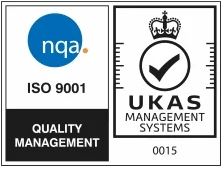Standard Mesh
The most commonly used mesh in hybrid circuit manufacturing today is stainless steel plain weave cloth. In order to assure uniform wire diameter, consistent mesh thickness and evenly tensioned weaves, MCI use solely mesh produced by BOPP of Switzerland. There are less expensive meshes available, however they cannot be stretched to the exacting tensions required for precision screen-printing.
Calendered Mesh
Most stainless steel mesh can be calendered. The calendering process flattens the knuckles of the wires, reducing the overall thickness of the mesh while greatly improving thickness tolerance. The benefits of using this cloth are:
- Consistent and significantly reduced wet deposit.
- Improved screen life; thinner prints would otherwise require finer mesh which has less strength.
- Thicker emulsion coating therefore improving edge definition.
Ultra Thin Mesh
The main advantage of using ultra thin wire is the larger open area of the cloth. For example, a 325UT mesh with 24 micron wires and 47% open area produces far less interference in the printing of a 75 micron line than a 325 mesh screen having 30 micron wires and only a 39% open area.
Deposit uniformity and edge definition of small features is greatly enhanced as a result.
Applications/Choices
When choosing a mesh for a specific application you need to examine three sets of parameters:
The mesh opening must be large enough for at least three of the ink or paste particles to pass through at once, otherwise the mesh will clog. The test determines the minimum mesh opening that may be used. The amount of paste which can be deposited, is a factor of mesh thickness multiplied by the percent of open area.
If less deposit is needed, a thinner mesh and/or smaller open area percentage must be used. Additional wet deposit is achieved by using a thicker mesh or by increasing the emulsion thickness, or build-up. The final dried, reflowed or fired thickness depends on the composition of the paste, it’s volatile content and the sintering characteristics of the particles, but control of this final value always begins with the wet deposit.
The pattern or print tolerances must be 3 times larger than either the wire diameter or the mesh knuckle, where wires cross over each other. Wire size affects the proper development of the pattern, as well as the flow of the ink or paste around the wire.
Please click here to view our product specifications.





